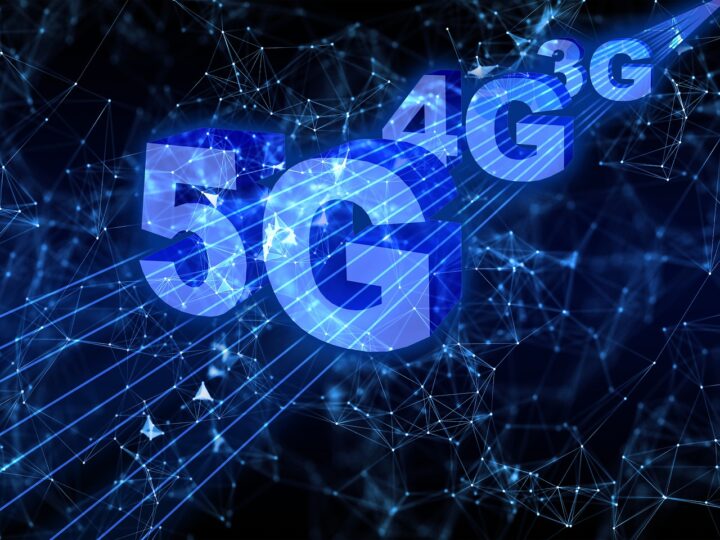BY WALE AMEEN
Before its emergence as one of the two provisional winners of the 5G spectrum license, Mafab Communications Limited was a pretty much unknown name in the Nigerian telecoms industry. However, it shot into the limelight the moment it edged out more favoured Airtel Nigeria to emerge as the second telecommunications outfit along with MTN as the preferred bidder for Nigeria’s 3.5 gigahertz (Ghz) spectrum (also known as C-band) auction for the deployment of 5G networks.
Since its win, the outfit has perfected plans to dominate the Nigerian telecommunications space, but how well is it equipped to position itself as a formidable brand and also give the big name in the room a run for its money to clinch a sizeable chunk of the internet market share.
Ambitious goals
Advertisement
According to a document the company recently released, it plans to deploy over 6,000 sites within five years i.e 1,000 sites in its first year, 2,500 in the second year, 4,000 in the third year, 5,000 in the fourth year, and then 6,000 in its fifth year.
Along with this, the company projects to have gained a subscriber count of 7.5 million within its five years.
For it’s first year, it projects that it will gain 1.5 million subscribers. Then double it to 3 million by the second year, and reach as much as a 65% growth in the third year to record 5 million subscribers while projecting growth to slow down in the fourth year to about 35% and then go on to record a subscriber base of 7 million in its fifth year.
Advertisement
Quite an ambitious plan anyone would say as many hurdles lie in its path to achieving such tall dreams.
Hurdles to cross
Several hurdles await the young communications company, a subsidiary of Althani Group of Companies which has interests in insurance, banking, hospitality, and telecoms sectors of the Nigerian economy.
According to the NCC, Mafab and MTN are required to pay the sum of $273 million being the cost for each lot of 100 MHz licenses on or before February 24, 2022, which is about 7 weeks away.
Advertisement
How exactly does it plan to raise the lump sum?
According to the document, the company is proposing to raise $350 million via equity by issuing 70 million units of its shares at N5 and also raise $1.59 billion through debt to complete a funding round of $1.9 billion. This it intends to use to defray the cost of the spectrum along with other costs that will pop up.
What this essentially means is that as at the time it was bidding for the license, the company did not have the money to pay for it. It was just working with pure projections, vibes and ‘Insha Allah’ as the popular street lingo goes. But everyone knows that in the world of business, ambitious projections can only take anyone so far.
When the rubber meets the road, dynamics never before anticipated will arise which will test the resolve and validity of the claim. Any experienced businessman will tell you this. This probably explains how and why the relatively unknown company was able to present a bid higher than that of an experienced brand like Airtel.
Advertisement
Secondly, the company projects to have about 7.5 million subscribers by its fifth year in operation. It has itemised a seemingly well-structured subscriber acquisition template. Again, how realistic is this? The company needs to consider the fact that subscriber acquisition is not what it used to be six or seven years ago as teledensity has improved over the years. It presently stands at 99.18% as of August 2021 from 0.04% back in 2001.
Records show that the telecommunication companies have witnessed fluctuations and even reductions in subscriber retention and acquisition owing to several factors over the years.
Advertisement
As a new entrant, what gives it such confidence that it will gain as many subscribers within such a short time from its launch date upon which it most probably has also tied revenue projections?
Next is the issue of the 5G connectivity market it is eyeing specifically. Given that it does not have previous experience in the telecoms industry and neither does it have the requisite infrastructure, its rollout phase is sure going to be a daunting one and it remains to be seen how it eventually scales this.
Advertisement
According to the company, it plans to adopt either of two options to enter the market: It plans to either obtain 3G and 4G deployment licenses of which its either going to approach the NCC for support as a new entrant national carrier or acquire an existing telco and then use the telco’s existing infrastructure and license in its delivery of 3G and 4G services or acquire operational assets such as full network functions virtualisation (NFV) architecture and modular data centers.
These options are in themselves fraught with visible loop-holes. Again, given the controversy which the 5G network has so far generated, it remains to be seen how smooth the uptake of the connectivity will be.
Advertisement
Recently, US airline companies have raised fears that the use of 5G networks could pose significant risks to air travel as it has the potential of interfering with air traffic communications thereby causing delays and disruptions. This, it should be noted is an ongoing development and studies are still going on. As such, no one knows yet how the pendulum will swing.
Lastly, even when it clears the hurdles of setting up, it will have to embark on an aggressive campaign of winning the hearts of Nigerian consumers who already are piqued at the new name. The challenge is even higher as it will be going toe to toe with the well-established and entrenched telecommunications brand MTN with a market share of 39.2% with its 68.9 million subscribers.
Hopefully, this will not be one of those hyped emergence that at the end of the day turns out to be a ruse after all.
Ameen is a Nigerian journalist. He can be reached via [email protected] and on Twitter @wale_ameen
Views expressed by contributors are strictly personal and not of TheCable.
Add a comment






